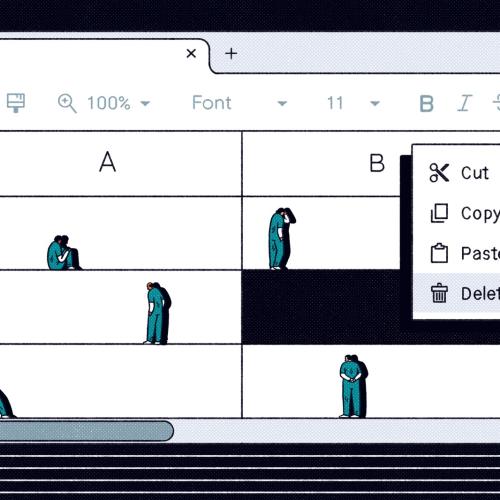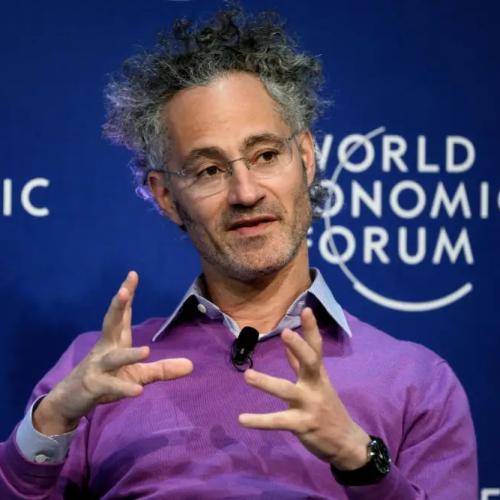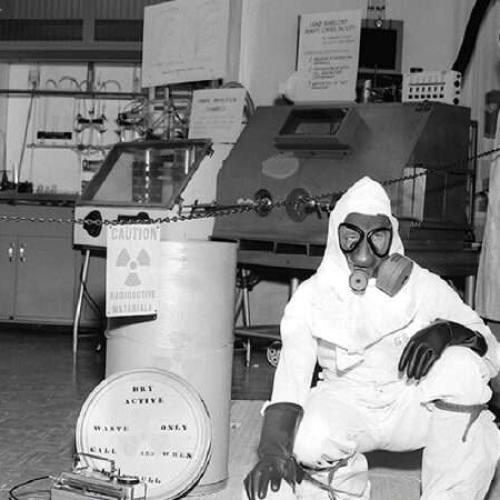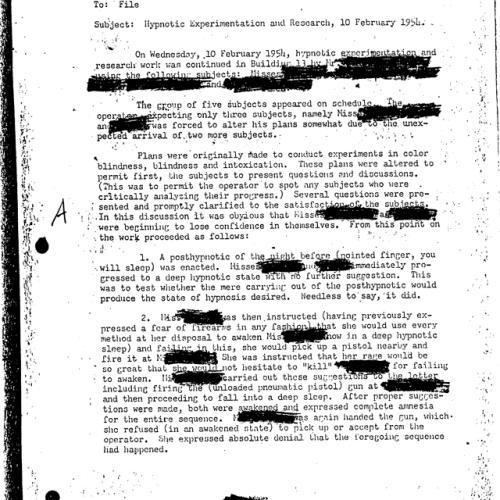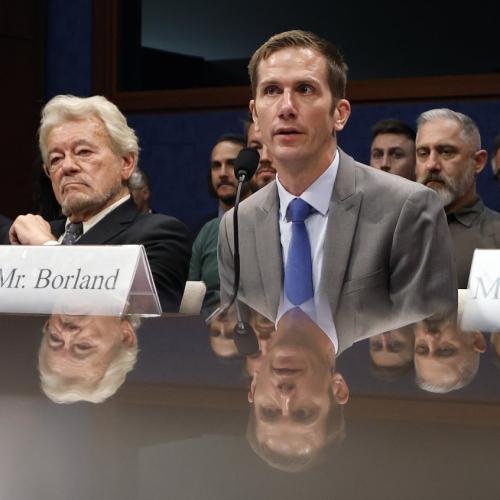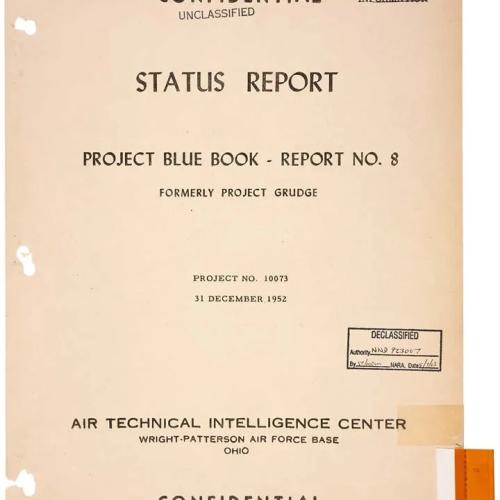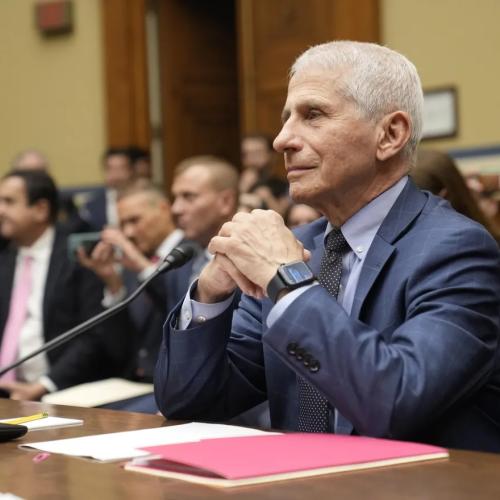Energy News Stories
Below are key excerpts of revealing news articles on energy from reliable news media sources. If any link fails to function, a paywall blocks full access, or the article is no longer available, try these digital tools.
For further exploration, delve into our Energy Information Center.
Its often smarter to borrow from nature than reinvent the wheel. That was the approach of researchers at the University of Illinois at Chicago (UIC) to remove carbon dioxide (CO2) from the atmosphere, and convert it into an efficient, inexpensive fuel. The result: an artificial leaf that turns CO2 into fuel, "at a cost comparable to a gallon of gasoline" could render fossil fuel obsolete, according to the researchers. The leaf is one of a growing number of inventions that mimic photosynthesis to remove excess carbon from the atmosphere, and convert it into new, sustainable forms of energy to power our world. The new solar cell is not photovoltaic - its photosynthetic, said [the studys lead author] Amin Salehi-Khojin. Instead of producing energy in an unsustainable one-way route from fossil fuels to greenhouse gas, we can now reverse the process and recycle atmospheric carbon into fuel using sunlight." The concept of reduction reaction - converting CO2 into a burnable form of carbon - isnt new. But scientists previously relied on silver and other expensive precious metals to break gas into storable energy. UIC researchers took a different approach. When light strikes the "leaf," hydrogen and carbon monoxide bubble from the cathode, while free oxygen and hydrogen ions are released from the anode. Leafs could be spread throughout a solar farm, or used in smaller applications, the researchers said.
Note: Explore a treasure trove of concise summaries of incredibly inspiring news articles which will inspire you to make a difference.
Do you think a 13-year-old could change the world? Max Loughan could be the one to do it. When we interviewed him, Max was wearing his lab coat ... in his parent's old boiler room, which has been converted into a lab. He ponders the future often. "The future that I imagine is the future, frankly we all imagine." He wants to make the world a better place, and to do that, Max believes you need one single thing: "If you got energy, you have power, you have everything." So to solve this problem, a few months ago, Max took the matter into his own hands. He created an electromagnetic harvester out of a coffee can, some wire, two coils, and a spoon. "This cost me 14 bucks," Max said. The harvester conducts radio waves, thermal, and static energy, and turns it into electricity. "This wire takes energy from the air." And the inside the coffee can, "We turn it from AC to DC." We took the device outside, and wrapped Max's twin brother, Jack, in a string of L.E.D. lights. Max connects the lights to the harvester, and sure enough, they turned on. His device clearly works. A $14.00 invention was able to do that. So imagine this same harvester on a scale 20 times larger. "As cheesy as this sounds, from day one, on this planet that I knew I was put here for a reason," said Max. "And that reason is to invent, to bring the future."
Note: Don't miss this video of the most amazing 13-year-old who just may have solved the energy problems of our world!!! For more along these lines, see concise summaries of deeply revealing new energy technology news articles from reliable major media sources.
Power plant turbines might be getting smaller. The tech is still in its early stages but GE Global Research is developing a turbine that - though only the size of the average desk - could someday power entire towns. The principle behind it could have a big effect on the future of turbine power. Instead of being pushed by steam, like most power plant turbines, the "minirotor" as [steam turbine specialist at GE Global Research Doug] Hofer calls it is pushed by CO2. Not gaseous CO2, or liquid CO2, but CO2 so hot and pressurized that it forms what is called a supercritical fluid, a state of heat and pressure so extreme that the distinctions between liquid and gas basically cease to exist. The tiny turbine's design is intended to harness the power of this specific (and weird) state of matter which could make the turbines as much as 50 percent efficient at turning heat to electricity, a significant improvement over ~45 percent efficient steam turbines. On top of that, these turbines should be relatively easy to spin up or down as demand shifts allowing power plants to more accurately tweak supply on the fly. The prototype design is a 10 MW turbine, though GE hopes to be able to scale the tech to enough to power a city, somewhere in the 500 megawatt range. The first physical tests are scheduled for later this year.
Note: Explore a treasure trove of concise summaries of incredibly inspiring news articles which will inspire you to make a difference.
A Federal Energy Regulatory Commission judge has found that a division of Shell Oil engaged in fraud and market manipulation during Californias energy crisis, with company traders joking on tape about burning the evidence if they were ever caught. The tentative decision ... holds Shell and Spanish energy company Iberdrola liable for $1.1 billion in ill-gotten profits, money that could be refunded to Californians if the decision stands. It could end the last legal case over the expensive, long-term power purchase contracts that California signed under duress during the 2000-01 crisis. The state has already settled with all other companies accused of unjustly profiting from the long-term contracts, settlements worth a total of $7.7 billion. Officials are still pushing complaints against 13 companies involved in short-term contracts during the crisis, but have settled with others for a total of roughly $4 billion. The initial decision ... details Shell traders using schemes similar to those employed by Enron to drive up day-to-day power prices, which then increased the price California had to pay on its long-term contracts. As a result, Californians ended up overpaying Shell by $779 million and Iberdrola by $371 million. One scheme the judge cited, called Ricochet by Enron and more commonly known as megawatt laundering, involved buying electricity within California to ship to a destination outside of the state while simultaneously selling the same power back into the states market at a higher price.
Note: Read the text of tape recordings of Enron traders laughing at the misery they caused in California. For more along these lines, see concise summaries of deeply revealing corporate corruption news articles from reliable major media sources.
A US government agency says it has attained the holy grail of energy the next-generation system of battery storage. Advanced Research Projects Agency-Energy (Arpa-E) a branch of the Department of Energy says it achieved its breakthrough technology in seven years. Ellen Williams, Arpa-Es director, said: We can create a totally new approach to battery technology, make it work, make it commercially viable, and get it out there. If thats the case, Arpa-E has come out ahead of Gates and Musk in the multi-billion-dollar race to build the next generation battery for power companies and home storage. The battery storage systems developed with Arpa-Es support are on the verge of transforming Americas electrical grid ... within the next five to 10 years, Williams said. She said projects funded by Arpa-E had the potential to transform utility-scale storage, and expand the use of micro-grids by the military and for disaster relief. Projects were also developing faster and more efficient super conductors. The companies incubated at Arpa-E have developed new designs for batteries, and new chemistries, which are rapidly bringing down the costs of energy storage, she said.
Note: Arpa-E is involved with a large number of breakthrough energy projects. For more along these lines, see concise summaries of deeply revealing new energy technology news articles from reliable major media sources.
A revolution of sorts is brewing in the clean energy field, with the emergence of fusion and "low energy nuclear reaction" (LENR) energy. These processes, unlike fission reactions used in conventional nuclear reactors, need not emit dangerous radiation, nor do they produce radioactive byproducts. The fuel is plentiful and free. One pioneer in LENR is Andrea Rossi, an Italian-American inventor-entrepreneur ... who recently formed a venture to commercially market systems based on an LENR process he has developed. Many are understandably skeptical of Rossi's claims; yet he reports that he has a full-scale working prototype, delivering 1 MWatt continuous net output power, which is already seven months into a one-year acceptance test at a commercial client's site. Several observers have seen the system in operation, and have reported that it is working as claimed. On 25 August 2015, the U.S. Patent Office awarded Rossi a patent for his process. Given the potential importance of these developments, scientifically, economically and environmentally, we have been following progress in this area in earlier Huffington Post articles (HP#1) and (HP#2). "We foresee applications for central heating of commercial buildings, heat production for industrial processes and electric power generation. My dream is for domestic heat and power generation," [said Rossi]. "We have already obtained safety certification for our industrial plants. Domestic systems are still on course in the certification process."
Note: You can explore this patent on the US Patent office website on this webpage. And read an intriguing article from a local newspaper about the new energy invention of Randall Mills, who has raised over $100 million to fund development of his work. For more along these lines, see concise summaries of deeply revealing new energy technology news articles from reliable major media sources.
Is Steorns Orbo technology a non-polluting, supercheap source of power? Steorn emerged at the turn of the century and to date it claims to have attracted 23 million in private investment. Put at its simplest, the Orbo technology is a non-polluting, almost cost-free source of power. It is not a battery but offers the same function. At the Steorn premises a table displays rows of heavy crimson skull-shaped boxes, known as power cubes. Each, according to the claims, holds numerous small batteries which recharge themselves allowing for a permanent supply of energy. Cube units retail at 1,200 and the first orders are due to arrive with buyers this month. However, the cube is not seen by the company as a mass-market product. They are simply a showcase for the technology. The real focus is on the mobile phone that never needs to be recharged. Explaining his own technology, [company founder Sean] McCarthy dismisses previous suggestions they are claiming to have developed a perpetual motion machine (a hypothetical device that works indefinitely without an apparent energy source) as there [are] no moving parts. Technically it isnt a battery at all; youd call it a battery substitute technology. Its something that replaces the function of the battery. It is really a generator rather than a storage device, he says.
Note: Steorn placed a full-page ad in The Economist in 2006 calling for scientists to test its new technology. For more along these lines, see concise summaries of deeply revealing new energy technology news articles from reliable major media sources.
Hydrogen has the potential to fuel incredibly environmentally clean cars. But making that fuel hasn't been so efficient or economical. Pure hydrogen gas does not occur naturally on Earth, so scientists must devise ways to separate hydrogen from naturally occurring compounds, like H2O. Until now, cars that run on water have been out of reach. But a team of scientists have come up with a different mechanism to produce hydrogen fuel from water. These researchers have created a biomaterial that catalyzes the splitting of the water elements, which they describe in a paper published in the journal Nature Chemistry. The biomaterial, called P22-Hyd, is made up of a modified enzyme, hydrogenase, protected within the protein shell of a bacterial virus. The mechanism goes both ways. P22-Hyd breaks the chemical bonds in H2O to produce hydrogen and oxygen, but it can also combine the two gases to generate power. That reversal is how hydrogen fuel cell cars work. "The reaction runs both ways - it can be used either as a hydrogen production catalyst or as a fuel cell catalyst," study lead author Trevor Douglas, of Indiana University Bloomington said. "You don't need to mine it; you can create it at room temperature on a massive scale using fermentation technology. It's a very green process to make a very high-end sustainable material."
Note: Explore a treasure trove of concise summaries of incredibly inspiring news articles which will inspire you to make a difference.
Sweden said its targeting to become one of the first nations in the world to be free of fossil fuels and that it will invest 4.5 billion kronor ($546 million) in climate-protection measures next year as a step toward that goal. The government will increase support for solar, wind, energy storage, smart grids and clean transport. Investment in photovoltaics will rise nearly eightfold. Sweden got about two-thirds of its electricity generation capacity from clean and low-carbon sources last year. It plans to significantly reduce its emissions by 2020. It didnt set a target date for the nation becoming fossil free, though Stockholm may reach that goal by 2050. Sweden will also spend 50 million kronor annually on electricity storage research, 10 million kronor on smart grids and 1 billion kronor to renovate residential buildings and make them more energy efficient. The Scandinavian country will also increase its funding of climate-related projects in developing countries, raising its budget to 500 million kronor. The government hopes it will send an important signal before the United Nations conference in Paris in December.
Note: Explore a treasure trove of concise summaries of incredibly inspiring news articles which will inspire you to make a difference.
842 megawatts is ... more than enough to power all the homes in the Denver metro area. Its also enough to keep about 15 percent of Googles data centers humming. On Thursday, Google announced that it had finalized contracts to buy 842 megawatts of wind and solar energy from plants in the US, Chile, and Sweden, nearly doubling the company's total clean energy capacity. The contracts ... help to give the energy companies financial stability to be able to build additional clean energy facilities. Renewable energy now provides about 37 percent of the total energy consumed by Googles data centers worldwide. This purchase is the largest of its kind ever made by a non-utility company, but Google isnt the only tech giant shifting over to clean energy. One of Facebooks five data centers is powered entirely by a nearby wind farm, and the company says it plans to get 50 percent of its energy from renewable sources by 2018. Amazons cloud computing division announced last year that its operations would eventually be powered completely by clean energy. And in 2014, Apple announced that all of its offices, stores, and data centers in the US were being powered ... renewable sources. Google was one of 13 large companies that collectively invested more than $140 billion in new clean energy projects in July as part of the American Business Act on Climate Pledge. Apple and Microsoft were also part of the pledge; both companies said their operations would eventually be 100 percent powered by renewable energy.
Note: Explore a treasure trove of concise summaries of incredibly inspiring news articles which will inspire you to make a difference.
Some 1.3 billion people worldwide live without electricity, affecting health, lowering incomes, and making education difficult. An increasing number of advocates ... are promoting the use of solar power to [increase] access to clean energy across the globe. Solar is a low-cost energy source in the long run, but it has high initial costs. Some solar manufacturers and energy distributors are helping people skirt these up-front costs through creative financing models. In programs such as these, customers can finance their own solar systems for less than what they would otherwise be spending on kerosene ($40-$80 per year on average). Barefoot College developed a training program for grandmothers, who ... learn how to install, maintain, and repair the solar systems and, upon graduation, receive a monthly salary for their work. Solar Sister trains rural African women in sales and entrepreneurship, empowering them to become active participants in the economy while acknowledging that women invest 90 percent of their income into their familys well being. Lighting a Billion Lives trains local entrepreneurs to manage their own solar charging station, from which they rent out solar lamps for a modest price to the local population. The organization also offers microloans and subsidies to facilitate such entrepreneurship. Grameen Shakti (Bangladesh), SolarAid (Africa), and Kamworks (Cambodia) operate with similar values. In this way, solar companies are ... empowering families [and] communities.
Note: Explore a treasure trove of concise summaries of incredibly inspiring news articles which will inspire you to make a difference.
An extraordinary heart-shaped solar farm is set to be built on the Pacific island of New Caledonia. The 2MW "Heart of New Caledonia" is being built by solar company Conergy and should start producing power for 750 homes from early next year. The plant ... is expected to save around 2m tonnes of carbon dioxide emissions over its projected 25-year lifetime and reduce the French overseas territory's dependence on oil, gas and coal. The eye-catching heart shaped installation is made up of 7,888 panels across the four-acre site on Grand Terre, New Caledonia's largest island, with the design only visible from the air. The design is inspired by the "Coeur de Voh", or "Heart of Voh", an area of nearby wild mangrove vegetation that has naturally taken the shape of a heart. The "Coeur de Voh" gained worldwide recognition thanks to the aerial photography of environmental campaigner Yann Arthus-Bertrand in the best-selling book, The Earth from Above. David McCallum, managing director of Conergy Australia, said, "The 'Coeur de Voh' is an important landmark for the people of New Caledonia, and shows just how extraordinary nature can be. The 'Heart of New Caledonia' solar plant will be its man-made double, a landmark for clean power generation. It will also probably be the world's first beautiful PV plant, and perhaps the first beautiful power station of any description, anywhere on the planet."
Note: See a photo of this beautiful solar array at the link above. Explore a treasure trove of concise summaries of incredibly inspiring news articles which will inspire you to make a difference.
A Dutch bike path designed to generate solar power has produced more power than expected in its first six months. SolaRoad has generated more than 3,000 kilowatt hours of electricity since the 70-metre-long strip officially opened in November 2014, in Krommenie, a village northwest of Amsterdam, the project reported late last week. It said that was enough to power a single-person household for a year. "We did not expect a yield as high as this so quickly," said Sten de Wit, spokesman for the public-private partnership project, in a statement that deemed the first half-year of a three-year pilot a success. Based on what it has produced so far, the bike path is expected to generate more than 70 kilowatt hours per square metre per year, close to the upper limit predicted based on lab tests. SolaRoad is made of concrete paving slabs embedded with ordinary solar panels. The solar panels are protected by a centimetre-thick layer of transparent, skid-resistant tempered safety glass that can support bicycles and vehicles. So far, more than 150,000 cyclists have zipped over the solar-generating part of the bike path. SolaRoad says they "hardly notice it is a special path."The SolaRoad project hopes to test the technology on smaller municipal roads next. Meanwhile, a similar project called Solar Roadways is underway in the U.S.
Note: For more along these lines, read about how solar power is booming, and find out about the new energy developments underway all over the world.
Researchers at Japan's Tohoku University are making a bold claim: an entirely new state of matter. The team, led by Kosmas Prassides, says they've created what's called a Jahn-Teller metal by inserting rubidium, a strange alkali metal element, into buckyballs, a pure carbon structure which has a spherical shape from a series of interlocking polygons (think of the Epcot Center, but in microscopic size.) The researchers created a complex crystalline structure that seemed to conduct, insulate, and magnetize while acting as a metal. It goes far beyond what ordinary matter can do. So what's the big deal? Applying pressure to the compound when it's in the conductor/insulator phase turns it into the weird state of matter, and also makes it superconductive at (relatively) high temperatures. Most superconductors that we know of need to be barely above absolute zero. Understanding and then mastering high-temperature superconductors, which this weird state of matter could help researchers to do, could make all sorts of new things possible in computing, transportation, infrastructure ... sort of everything. Discoveries of superinsulators in 2008 sort of hinted that this state of matter was possible, but confirmation would be a game changer for materials science.
Note: Explore a treasure trove of concise summaries of incredibly inspiring news articles which will inspire you to make a difference.
Josh del Sol got curious in the summer of 2011 after a friend linked a serious illness to the recent installation of a "smart meter." Del Sol subsequently learned that electrical utilities across North America had been quietly installing "smart grids" that ... monitor Internet-connected meters and appliances in homes and businesses. Now, del Sol is on the verge of premiering a feature-length documentary ... titled Take Back Your Power, disclosing questionable industry practices in support of implementing networked control systems for power plants. The film links billing mistakes, invasive monitoring, even human illnesses to the rising use of smart grids in the U.S. and Europe. "Take Back Your Power delivers an ominous, powerful message about the energy industry's shift to closely watching how customers use energy in their home in an invasive, controversial manner," says Lee Waterworth, president of Yekra, a video-on-demand company. Del Sol says access to industry sources was tough. "We had a difficult time getting anyone in the industry to talk to us on camera once they found out that we were wanting to get to the bottom of some of these concerns," he says. The filmmaker was surprised by the contrast between the views of industry officials and those of ordinary citizens trying to get to the bottom of safety, privacy and health concerns. Del Sol hopes the documentary helps to prompt the electricity industry "to provide more transparency, accountability and clarity on the issues we explore in the film."
Note: You can find this documentary on the Internet. For more, read how solar providers are using "smart" systems to help their customers save money while traditional utilities use these systems only to cut their own costs. Meanwhile, concerns about the health impacts of wireless tech and the ongoing erosion of privacy rights continue to grow.
Three years ago, the nations top utility executives gathered at a Colorado resort to hear warnings about ... rooftop solar panels. According to a presentation prepared for the group, Industry must prepare an action plan to address the challenges. Three years later, the industry and its fossil-fuel supporters are waging a determined campaign to stop a home-solar insurgency that is rattling the boardrooms of the countrys government-regulated electric monopolies. Recently, the battle has shifted to public utility commissions, where industry backers have mounted a ... successful push for fee hikes that could put solar panels out of reach for many potential customers. In a closely watched case last month, an Arizona utility voted to impose a monthly surcharge of about $50 for net metering, a common practice that allows solar customers to earn credit for the surplus electricity they provide to the electric grid. Net metering makes home solar affordable by sharply lowering electric bills to offset the $10,000 to $30,000 cost of rooftop panels. A Wisconsin utilities commission approved a similar surcharge for solar users last year, and a New Mexico regulator also is considering raising fees. In some states, industry officials [are now] arguing that solar panels hurt the poor. Its really about utilities fear that solar customers are taking away demand, said Angela Navarro, an energy expert with the Southern Environmental Law Center.
Note: In Arizona, traditional utility companies are brazenly manipulating the law to attack solar power installation companies. Meanwhile, the Rockefellers have stopped investing in fossil fuels. Does this mean that the renewable energy revolution is now in full swing?
Burlington recently announced that it now produces or gets more power than its citizens use. And its all coming from renewable sources of energy like wind and solar and hydroelectric. Ken Nolan helps run Burlington Electric, the local utility company that supplies power to the citys 42,000 residents. Some might say, of course this is happening in Burlington the town thats often cast as a liberal, progressive haven. But Burlington and Vermont at large has plenty of economic reasons to try and do their part to tackle climate change: Vermonts iconic, multi-million dollar industries skiing and maple syrup are as dependent on the climate as any industry in the U.S. And the state suffered hundreds of millions of dollars in damage from Hurricane Irene the type of storm scientists say will grow in frequency unless we reduce our consumption of fossil fuels. Nolan says that switching from fossil fuel energy to renewable energy will likely save the city about $20 million dollars over the next two decades. Whats more, consumers havent been hit with a big price increase: while residential customers across the US have seen small but gradual increases in their utility bills over the years, Burlingtons rates havent increased since 2009. Theres nothing magic about Burlington in terms of where it sits. It was just a bunch of decisions made over ten years or more, to get towards renewable energy.
Note: Explore a treasure trove of concise summaries of incredibly inspiring news articles which will inspire you to make a difference.
Arizonas largest utility company has been at odds with the solar panel industry for years. Now, APS [Arizona Public Service, the states largest utility] is asking the Federal Trade Commission to crack down on solar companies. But they didnt ask them directly. Six Arizona Congressmen sent letters to federal regulators asking them to investigate solar leasing companies. Reporter Evan Wyloge ... has the original letter and proves its actually APS spearheading the effort. Arizona Public Service [is] one of the largest campaign donors for the group of lawmakers. The APS-authored, congressmen-signed letter comes as the latest in an ongoing effort to stymie third-party solar panel companies, whose business has grown tenfold over the past half-decade, presenting a challenge to the long-term business model of traditional utilities like APS. The high-profile fight between the traditional utility and newer rooftop solar panel companies is not unique to Arizona. Similar struggles have emerged in other states. On Nov. 19, Democratic Reps. Ron Barber, Ann Kirkpatrick and Kyrsten Sinema asked [regulators] in a joint letter to ... look into solar panel leasing practices. Then, on Dec. 12, Republican Reps. Trent Franks, Paul Gosar and Matt Salmon sent a similar letter to the FTC. After both letters were sent, the Arizona Corporation Commission voted late in 2014 to open a docket on consumer complaints about solar companies. Initial hearings are expected to begin this spring.
Note: For more along these lines, see concise summaries of deeply revealing government corruption and energy news articles from reliable major media sources.
Longmont [Colorado] has become a cautionary tale of what can happen when cities decide to confront the oil and gas industry. In an aggressive response to a wave of citizen-led drilling bans, state officials, energy companies and industry groups are taking Longmont and other municipalities to court, forcing local governments into ... expensive, long-shot efforts to defend the measures. Two years ago, [Longmont] residents voted to ban hydraulic fracturing from their grassy open spaces and a snow-fed reservoir. In Colorado, the energy industry, which argues that cities lack the authority to outlaw fracking, has already won rulings overturning three fracking prohibitions. Longmont, which sits near the juncture of rolling plains and jagged mountains, has spent about $136,000 fighting unsuccessfully so far to defend a 2012 measure that outlawed fracking. In July, a district court judge tossed out the ban, and the city is appealing. A judge also overturned a fracking ban last year in Fort Collins, Colo., and denied pleas from the city to keep the ban in place while local officials went to court to defend a five-year fracking moratorium. In Broadview Heights, Ohio, energy companies are suing the town and residents are suing the energy companies in return over a bill of rights that outlawed fracking and the disposal of its byproducts. While the Longmont City Council voted unanimously in August to defend the fracking ban, other towns have decided it is just too costly a fight.
Note: Fracking can poison drinking water, negatively impact human health, and may cause earthquakes.
NASA has tested a microwave thruster that seemingly violates the law of conservation of momentum. Originally reported by Wired, the technology bounces microwaves around to create thrust. British engineer Roger Shawyer designed the original and dubbed it the Emdrive. If the Emdrive actually works, it could be a game changer in the spacecraft business because it doesn't require propellant. Propellant is heavy, and once a spacecraft runs out of it, it loses the ability to change direction. Space historian Amy Shira Teitel makes an interesting point on the website Motherboard: "If a spacecraft, say a deep space probe like New Horizons, which is less than a year from its encounter with Pluto, didnt need propellant, that extra weight and space could be devoted to scientific instruments, larger solar arrays, or a larger power source." Last year, a Chinese team made an Emdrive and reported that they had created enough thrust to move a small satellite. NASA spent eight days testing an Emdrive that was built by Guido Fetta, an inventor based out of the Philadelphia metropolitan area. The lab detected a thrust of 30-50 microNewtons, about 1/20 of what the Chinese team measured. On a side note, the NASA lab doing the testing is the same one that is trying to develop the Alcubierre warp drive, another pie-in-the-sky idea. We'll know more once NASA publishes everything (right now, only the abstract is available) and outside experts weigh in on the experiment and data.
Note: For more along these lines, see a related summary about NASA's attempts to make a ship that travels through space without propellant, and read more about new energy technology.
Important Note: Explore our full index to revealing excerpts of key major media news stories on several dozen engaging topics. And don't miss amazing excerpts from 20 of the most revealing news articles ever published.




















